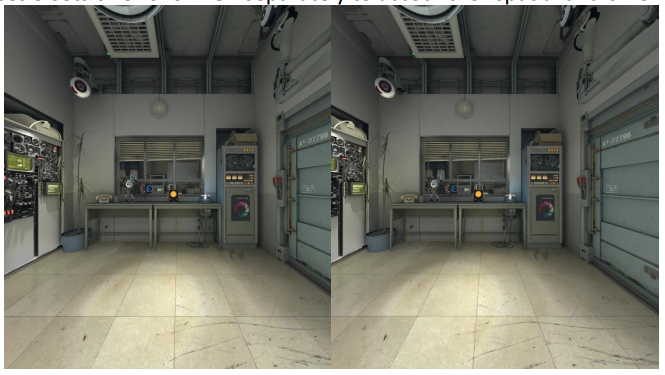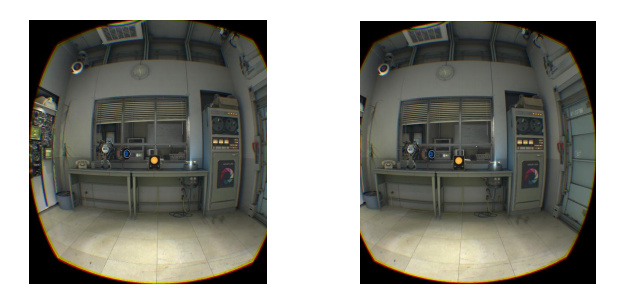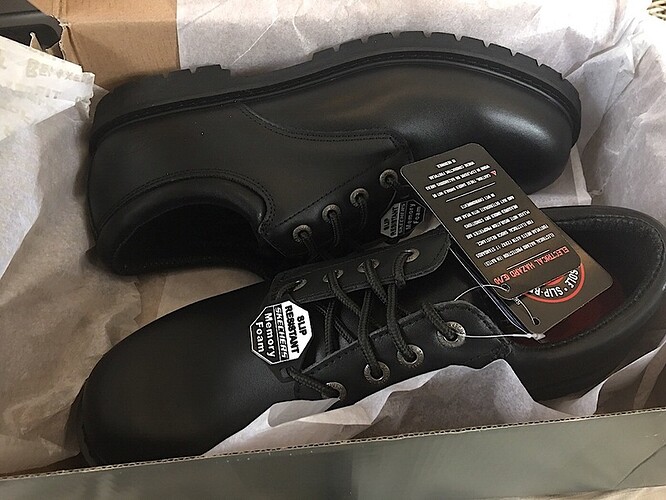It’s on the way!!!
If that thing ends up going to Norway - I’m going to suspect something is up.

I might as well get this stupid question out of the way earlier than later - @fearlessfrog - any idea what Steam SS value I will want to set in order to match the Reverb display resolution (using the rolled back Windows still by the way) of 2160x2160 per eye?
In lightly perusing the DCS forums one user reports that the software auto sets initially to:
“recommended resolution” is 150% - which means at the bottom it says 1972x1928 per eye"
I’m also seeing:
“Now make sure your Windows 10 is up to date with 1809 because mine would not connect unless I updated to it.”
“Steam automatically sets this resolution scale based on your gpu. But 1972x1928 isn’t the native resolution of the reverb. Move it to 188% to get the 2160 resolution of your headset.”
There is definitely a sense of the blind leading the blind on the settings. I was half expecting for someone to yell ‘It turned me into a newt!’ in that forum and people to all agree at one point.
The way to see it is that SteamVR uses a base resolution of the headset they first designed, the HTC Vive. That has a per eye resolution of 1080x1200. That would be 100% in SteamVR Video settings.
The HP Reverb per eye is a 2160x2160 resolution. That’s (taps on calculator) then means 1080x1200 = 1,296,000 total pixels versus 2160x2106 = 4,665,600 total pixels. So 1,296,000 ÷ 4,665,600 = 3.6. Because 3.6 is two squared numbers compared, we can take the square root of 3.6 and we get 1.897 as a ratio.
So 188% (or technically 190%) is the ‘use at native resolution’ Steam SS VR value to use for the HP Reverb.
This assumes:
-
DCS Pixel Density is set to 1.0 (otherwise they combine and multiply the end resolution, leading to a maximum buffer size of 4k by 4k, which is why people see no real benefit over a certain massive number, but still bad frames per second).
-
SteamVR isn’t updated to correctly read the native resolution from the Reverb, and just assuming it is the ‘Vive 1.0’ base instead.
-
Windows 10 1903 pre-warp frame buffer is not maxing out the initially rendered resolution to ‘1.0’ due to a bug in Windows (assuming it also impacts the HP).
-
You’ve turned on (from the default setting of off) of SteamVR ‘Settings / Video / Use custom resolution’ and set a manual resolution, otherwise it will by what SteamVR is good for your system, meaning different people will see different things by default.
I should write a short tech article called ‘VR Myths and Mysteries!’ or something. Other stuff I often read online and can’t reconcile with how the render pipeline works is stuff that contradicts things like:
-
SteamVR Motion Reprojection settings do not work with WMR. They are completely ignored. The only way to set this is via the WMR config file, instructions here.
-
Nvidia or AMD driver settings for MSAA/SMAA/FXAA, VSync etc are all ignored in VR. The only driver settings work using would be power profiles or possibly pre-rendered frame limits, and even then if the game supports that.
-
The WMR Driver for SteamVR just id’s the headset as part of SteamVR, it’s not a layer than translates the buffer or is ‘slower’ or ‘feels wrong’. It really doesn’t take any runtime perf away. It’s just the SteamVR implementation of whatever game you are using with it.
-
What you show on your monitor doesn’t impact your VR performance, as essentially it’s just copying a finished buffer. You can full screen, 4k or do whatever you like, and it’s not running the same pipeline twice, it’s just blitting the end result to a target that is taking VRAM anyway.
Anyway, the internet is about 58% incorrect a lot of the time anyway, so the trick is to ignore it all ![]()
I think you just did…! LOL. Thanks for all that concise information. It would be nice if SteamVR allowed a per headset setting that set the base resolution to the manufacturer native resolution to equal 100%. Although I get the desire for apples to apples comparisons when comparing across the spectrum of headsets.
I’ve been looking down my driveway sort of hoping a FedEx driver was working on Saturday…but so far no luck. So it will probably be Monday unless I go do a Mission Impossible from the roof of the CLT FedEx hub sort room.

It kind of does, but the makers sort of play a game where they get to pick what would be a ‘sensible resolution’ to call 100%. They tend to undersample because Johnny playing beatsaber on a laptop with his Lenovo will puke at bad frame rates, and they don’t want that so sort of ignore native resolution largely. The Vive Pro actually does report 100% properly for example.
There’s also the weird thing that the aspect ratio of the panels varies per headset, so SteamVR is using a common single value to judge both a changing horizontal and vertical axis scale, meaning it’s hard to say per headset what the ‘exact’ percentage is ‘true native’ or not.
It’s also worth picturing how a rectangular display has to get distorted to fit how the lens see the world, as in this scene made by the game:

…needs to get warped to look like this, so it looks correct in the lens:

…which means the off-screen render is about 1.4 times bigger to allow that (this is what the WMR ‘renderTargetScale’ value busts at ignoring over a 1.0 value, and why setting it to 2.0 helped clarity).
Exciting about the delivery. I saw some others that ordered that day report back on reddit that they had shipped notices and instantly thought you should check yours, but you got there first! Nice!
What about VR For Dummies?
The solutions are complicated, but the real dummies I think were the people that put all this together rather than the ones trying to use it.
When someone says ‘I didn’t like this WMR headset’ there are literally hundreds of ways that out of the box is was not set up right, and that’s really not their fault. People are returning their stick shift Camero’s for ‘being slow’ having not got it out of first gear, when they thought they were driving an automatic. It’s a shame really.
And before we get any ‘that’s why I like the single stack’ refrain, then I could just point at the hundreds of ‘my screen is flickering’, ‘my USB port is not recognized’, ‘we saved 50 cents on an IPD adjuster wheel on your $400 purchase’ and ‘my earphone has stopped working’ posts just to temper expectations that everything is perfect on that side as well. ![]()
VR is a bit of a wild west at the moment. Once set up it’s great, but getting there needs some edges smoothed out for sure. It doesn’t help that we like a genre that wants to read gauges from 4 feet, while most of the buyers just want to dance around.
WMR is kind of like flight simulation - it can be painful to set up, but once you do, it is wonderful.
I’m thinking about taking my headset to work to do some VR demonstrations to my pilot group next week. I’ll probably pick Aerofly FS2 as the demo program because it is just so straightforward to use and there isn’t any fiddling to worry about. I won’t worry that some component won’t load, or that I didn’t accidentally do step C before step B.
Oh hey…look what just showed up on the front porch…!!
.
.
.
.
.
.
.
.
.
.
.
Oh. My replacement Sketcher work shoes. Sigh. Guess I’ll write a full review of those.
Skechers Men’s Cottonwood Elks Slip Resistant Shoe
The Skechers Cottonwood shoe is an excellent choice for pilots that are often faced with slippery floors, grease, hydraulic fluid, and environmental obstacles such as snow, ice, and rain. Regularly listed for $75.00, the shoe can often be found on sale for as little as $50.
The leather shoe, with a synthetic sole, is of a relaxed fit with comfortable memory foam bedding. They aren’t the most durable shoe in the world, and will likely only last you a few years, but for the money they are a good value. I have an IPD of 68 wear a size 12 US, and have a fairly standard foot width, and feel the shoes are roomy. They are not light, and perhaps might feel a bit clunky to everyone but the Dutch, but the positives far outweigh the negatives.
The fantastic thing about these shoes is the heel height. Though I am an ace pilot like Tom Cruise, I don’t suffer from his vertical challenges - at 6’ 2", I don’t really need the additional 1" or more that the heel lift kit provides, but this shoe excels at getting me out of the massive puddles that I often have to ford on the backwater ramps of the Carolinas (I’m looking at you New Bern!).
Traipsing about a full inch off the tarmac is a great way to keep your feet dry, because there is nothing worse than having wet socks when you climb into a Citation for a three hour flight at FL430. Your upper torso will roast in the greenhouse that is the Citation cockpit, while your feet will freeze as if there is some DMZ between hot and cold that sits right about at the bottom of the instrument panel. Like the Fast Erect button I’ve often seen in aircraft, I’m convinced the Citation Foot Warmers are not actually hooked up to anything.
The aggressive soles are great for the occasional foray through hydraulic fluids (and as an air ambulance pilot…other…ahem…fluids) but one does have to be mindful of the small gaps in the sub-texturing. The tiny crevasses were designed specifically to pick up the sand and salt mixture that airports spread on their ramps during inclement weather. As you climb into the cockpit, if you have not taken care to kick the door a few times prior to entry, you may find the little devil nuggets dropping onto the keypad of the Universal UNS-1 FMS - which was also designed with keys that have the same gap diameter as the salt/sand nuggets. Needless to say, that crunching sound you hear as you try to depress the keys after they have been liberally sprinkled with salt and sand is the one that avionics technicians hear in their nightmares.
The footbed is very comfortable. I blame it on making me sleepy in the cockpit. I don’t quite feel like I’m floating on air or anything mind you, but they are supremely comfortable. After a few weeks, I shoot mine with a blast of Odor Eaters spray prior to donning and that seems to keep any foot funk at bay forever.
In summary - I highly recommend these shoes.
8.7 / 10
FedEx,
Get him that package now!
Please!
That was a pretty great shoe review!
I fear that once the Google robots find it, we will become known more for our shoe reviews than simulator topics…
![]()
I’d buy that. I am interested in upgrading to VR in the near-ish future. I am looking at it like this:
- Computer specs to support VR
- Video card to support VR
- VR device
I have been trying to follow along with this and similar threads but must admit to being hopelessly lost. I was kind of hoping that at some point, those of you in the know would just spontaneously post “This the VR headset is the winner!”…but hat’s not going to happen is it…
So yes, a VR for Dummies works for me. ![]()
Currently
-
As high as you can go 2080TI if poss
-
As high as you can go i7/i9
-
Cant help.









